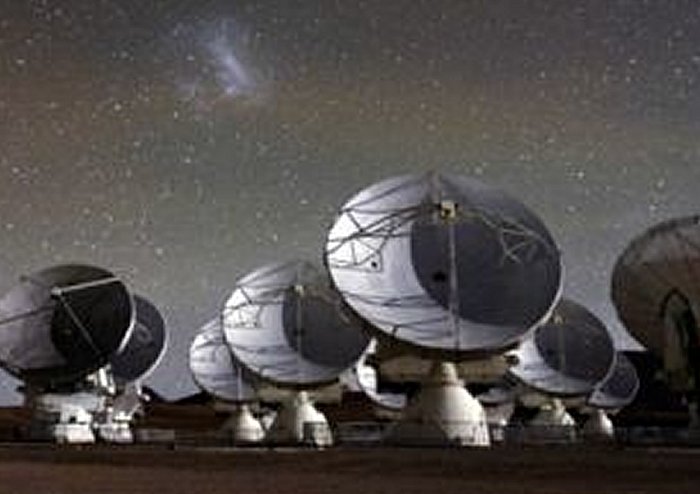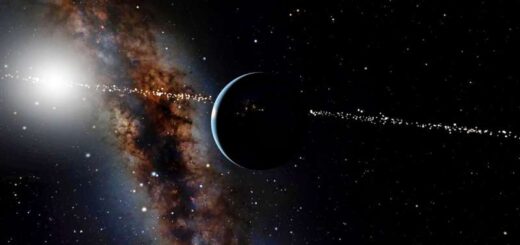Fast Radio Burst ‘Afterglow’ Was A Flickering Supermassive Black Hole

New research by Harvard astronomers Peter Williams and Edo Berger shows that the radio emission believed to be an afterglow actually originated from a distant galaxy’s core and was unassociated with the fast radio burst.
“Part of the scientific process is investigating findings to see if they hold up. In this case, it looks like there’s a more mundane explanation for the original radio observations,” Williams said .
As their name suggests, fast radio bursts (or FRBs) are brief yet powerful spurts of radio energy lasting only a few milliseconds. The first ones were only identified in 2007. Their source has remained a mystery and astronomers don’t know if they come from inside our galaxy or if they are extragalactic.
Most FRBs have been identified in archival data, making immediate follow-up impossible. The new event, FRB 150418, is only the second one to be identified in real time.
Radio observations reported in Nature purportedly showed a fading radio afterglow associated with the FRB. That afterglow was used to link the FRB to a host galaxy located about 6 billion light-years from Earth.
See also:
Repeating Fast Radio Burst Detected By Astronomers
Enigmatic Radio Waves: Researchers Find Detailed Record Of Mysterious Fast Radio Burst
Williams and Berger investigated the supposed host galaxy in detail using the NSF’s Jansky Very Large Array network of radio telescopes.
If the initial observations had been an afterglow, it should have completely faded away. Instead they found a persistent radio source whose strength varied randomly by a factor of three, often reaching levels that matched the initial brightness of the claimed afterglow.
The initial study also saw this source, but unluckily missed any rebrightenings.
“The radio emission from this source goes up and down, but it never goes away. That means it can’t be associated with the fast radio burst.”
The emission instead originates from an active galactic nucleus that is powered by a supermassive black hole. Dual jets blast outward from the black hole, and complex physical processes within those jets create a constant source of radio waves.
The variations we see from Earth may be due to a process called “scintillation,” where interstellar gases make an intrinsically steady radio beacon appear to flicker, just like Earth’s atmosphere makes light from stars twinkle. The source itself might also be varying as the active galactic nucleus periodically gulps a little more matter and flares in brightness.
Research is published in the Astrophysical Journal Letters.



 Creators of mankind
Creators of mankind Description of “Tall white aliens”
Description of “Tall white aliens” Where they came from?
Where they came from? About hostile civilizations
About hostile civilizations The war for the Earth
The war for the Earth “Tall white aliens” about eternal life
“Tall white aliens” about eternal life Video: “Nordic aliens”
Video: “Nordic aliens” Aliens
Aliens Alien encounters
Alien encounters The aliens base
The aliens base UFO
UFO Technology UFO
Technology UFO Underground civilization
Underground civilization Ancient alien artifacts
Ancient alien artifacts Military and UFO
Military and UFO Mysteries and hypotheses
Mysteries and hypotheses Scientific facts
Scientific facts


















